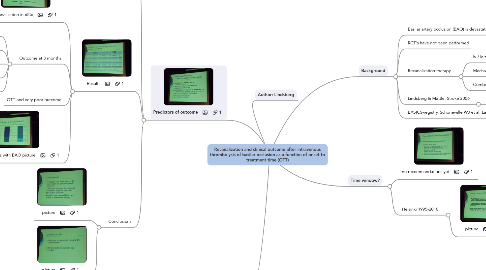Recanalization and clinical outcome after intravenous thrombolysis of basilar occlusion as a function of onset to treatment time (OTT)
by Paul de Roos


1. Author: Lindsberg
2. Background
2.1. Basilar artery occlusion (BAO) is devastating with high mortality 85-95%
2.2. RCT's have not been performed
2.3. Recanalization therapy
2.3.1. iv / ia thrombolysis?
2.3.2. Mechanical thrombectomy?
2.3.3. Combination?
2.4. Lindsberg & Mattle, Stroke 2006
2.4.1. IVT or IAT thrombolysis?
2.5. BASICS-registry, Schonewille WJ et al, Lancet Neurology 2009
3. Time window?
3.1. no recommandations yet
3.2. Helsinki 1995-2010
3.2.1. picture
4. Clinical phenotypes
4.1. Sudden onset with severe symptoms
4.2. Sudden onset with prodromal symptoms
4.3. Progressive/waxing and waning symptoms
4.4. Vascular diagnosis essential (CT-angio, MRA,DSA)
4.4.1. necessary for thrombolysis
5. Predictors of outcome
5.1. Outcome(s)
5.1.1. mRS
5.2. Results
5.2.1. Recanalization in 65%
5.2.1.1. subgroup with repeat angiographs
5.2.2. Outcome at 3 months
5.2.2.1. Untitled
5.2.2.2. predictors of good outcome
5.2.2.3. predictor of poor outcome
5.2.2.4. very poor outcome
5.2.2.5. Death
5.2.3. OTT and very poor outcome
5.2.4. Outcome in coma with BAO picture
5.3. Conclusions
5.3.1. picture
5.3.2. picture
